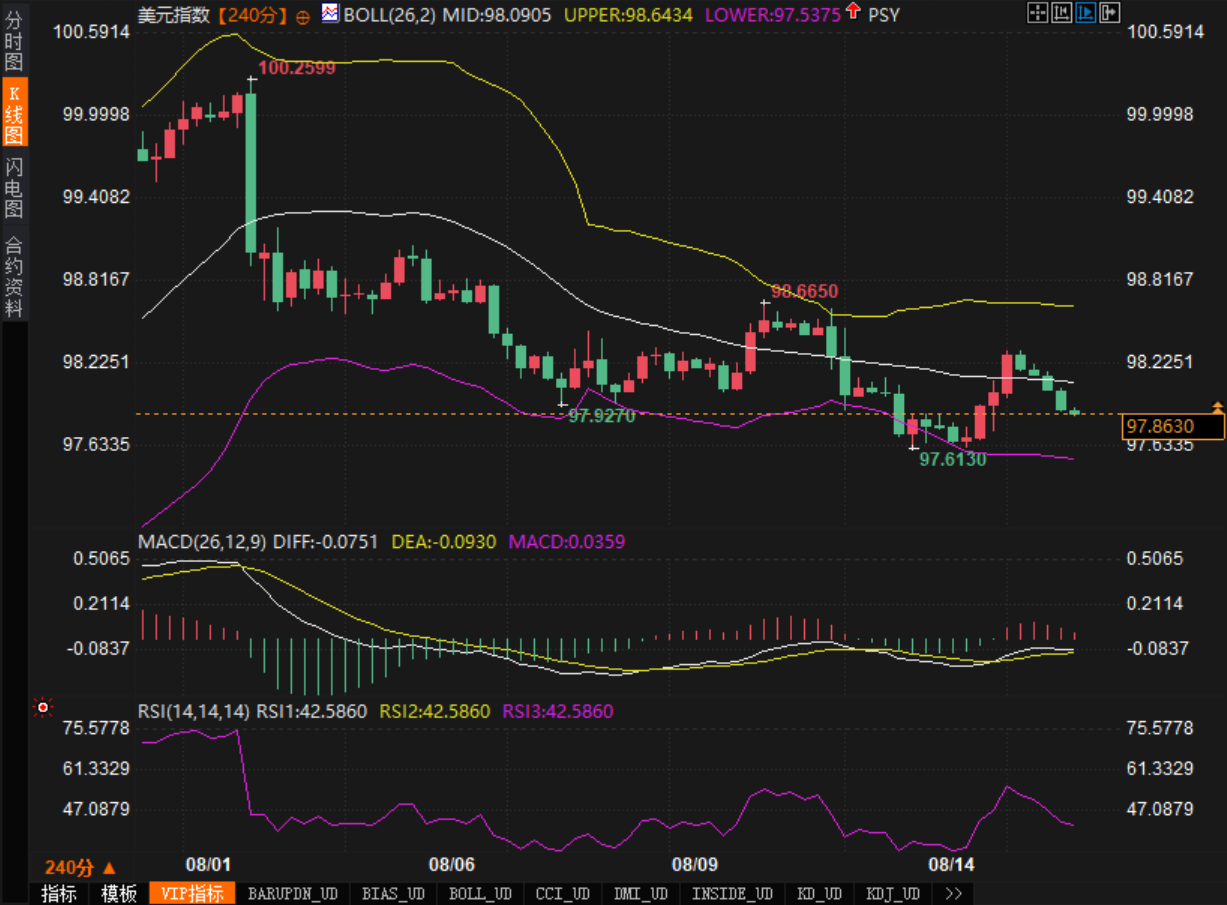With the release of US retail data, can the US dollar make another comeback?
2025-08-15 17:50:50

The US PPI data posted its largest increase in three years, indicating that tariffs were already impacting prices and partially easing expectations of interest rate cuts that had been triggered by the relatively mild Consumer Price Index (CPI) data, leading to a short-term rise in the US dollar. However, as the market digested the PPI data, traders realized that expectations for a September Fed rate cut remained strong, with over 90% of the market expecting a 25 basis point cut, which further increased downward pressure on the US dollar.
Today's key data will be US retail sales and the University of Michigan's consumer inflation expectations, which will shed further light on the impact of tariffs on consumer spending and may also affect the dollar's future performance.
Fundamentals
According to the latest data, the US Producer Price Index (PPI) rose by 0.9%, the largest increase in three years. This data suggests that US businesses are gradually passing on cost pressures to consumers due to the impact of tariffs. This provides the market with clues about the future direction of inflation and also has implications for the Federal Reserve's monetary policy. Although the market expects the Fed to cut interest rates in September, the data reinforces market expectations that the Fed will adopt a more cautious monetary policy.
In addition, US retail sales data will be released today, which will reveal how tariffs have affected consumer spending and further influence market expectations for the economic outlook. At the same time, the University of Michigan's consumer inflation expectations may also provide new clues to the market.
Technical aspects:
The US Dollar Index (DXY) chart shows that the current price remains within a downward trend. Bollinger Bands indicate that the price previously reached the upper band near 98.66 and experienced a sharp pullback, currently falling back below 98.00. As the price approaches the lower band at 97.60, the market is questioning the strength of support at this level.

Bollinger Bands indicate increased volatility. Despite a brief rebound, prices have failed to break through the upper band, suggesting continued market pressure. The RSI, however, indicates the market is currently nearing oversold territory and has failed to recover significantly, further confirming the presence of downward pressure.
From the chart structure, if the US dollar index fails to break through the resistance level above 98.32 in the short term, it will continue to fluctuate and correct. The support level is concentrated around 97.60. If it falls below this area, the downside risk may further increase and test the 97.00 mark.
Market sentiment observation:
Market sentiment currently shows a certain degree of risk appetite. Anticipating a meeting between Trump and Putin, the market is optimistic about progress in the Russia-Ukraine situation, driving the euro higher and putting pressure on the US dollar. Despite strong US PPI data, market expectations for a Federal Reserve rate cut remain unchanged, and bearish sentiment remains dominant.
Trader sentiment is influenced by multiple factors in the short term, including US economic data, geopolitical risks and the Federal Reserve's monetary policy direction.
Market outlook:
Bullish Outlook: If the US dollar can break through the resistance range of 98.32, it may usher in a short-term rebound. A rebound above the support level will give the market a short-term bullish opportunity, but the upward pressure to break through is still large.
Bearish Outlook: Currently, the US dollar remains in a downward trend. Market expectations for a September rate cut by the Federal Reserve remain. Coupled with the disturbance of geopolitical risks, whether the US dollar can hold the support level around 97.60 will determine whether the bears can further push the price down to 97.00 or even lower. If it falls below 97.60 support, the US dollar may enter a deeper correction range.
- Risk Warning and Disclaimer
- The market involves risk, and trading may not be suitable for all investors. This article is for reference only and does not constitute personal investment advice, nor does it take into account certain users’ specific investment objectives, financial situation, or other needs. Any investment decisions made based on this information are at your own risk.





















